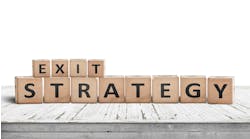As more collision shops feel the affects of the sluggish economy, owners have had to make difficult decisions about where to cut expenses. Many body shops, though, feel they’ve already shaved expenses down to the bone, and have struggled to find ways to keep costs down without laying off employees.
“It can be very difficult to find areas to reduce costs,” says Teresa Kostick, owner of All Line CARSTAR Auto Body in Bollingbrook, Ill. “You have ongoing operating costs, dues and subscriptions that have to be maintained, and you may carry debt that has to be serviced.”
Before looking for cost cutting opportunities, though, owners should understand exactly where their break-even point is, and how cuts will impact profitability. “Before anybody starts whacking numbers and headcount, they have to understand that they are spending money now for a reason,” says Tim Ronak, services consultant at AkzoNobel. “If you just cut investment capital either in human resources or equipment, that’s going to create some problems in terms of future growth.”
But according to Tony Passwater, president of consulting firm AEII, if shop owners take a closer look at their operations they will usually find some potential areas of savings. “They often think the solution is on the sales side and they believe the costs are in control,” Passwater says. “What I find more often than not is that costs are not in line, and they really need to reevaluate things on a regular basis.”
Here are eight areas shop owners should evaluate for potential cost savings:
1. Personnel
Payroll is a significant cost center, and when times are tough owners usually find themselves in the unenviable position of having to potentially lay off long-time employees. But there are other ways to save cash in the short-term, while keeping valuable employees on the roster.
First, eliminate any overtime until business picks back up. You can also ask every employee (including the owners) to take a temporary pay cut or commission reduction. With unemployment high, many employees would rather take a cut now than risk taking their chances on the job market.
And if you are lucky enough to be hiring, there’s a large pool of talent entering the job market from recently closed dealerships, putting owners in a better position to negotiate salaries.
You should also evaluate whether current salaries are justified by the output of specific technicians. “Most owners don’t know what any given technician is producing for them,” says Lou DiLisio, president of Automotive Industry Consulting. “Without understanding that, how do you adjust salaries? If you can identify the weak links in your shop, you can often improve your returns just by changing which techs get which jobs.”
“I don’t agree that you should be penalizing your whole staff if you can pinpoint where the problem is and fix it,” he adds.
2. Health care and Insurance
This is another tough one to swallow, but along with payroll health insurance is typically one of the largest expenses on the balance sheet. Increasing your deductibles can reduce coverage cost, although it will put a strain on already cash-strapped employees.
It may be possible to get less expensive coverage by becoming part of a larger group, through one of the regional or national collision repair associations, the local chamber of commerce, or a small business association.
“The cost of benefits for employees has gotten so far out of hand that you just have to stay on it and look for programs or alternatives to what you are doing,” Passwater says. “Otherwise, you can’t afford to pay those premiums.”
It’s also a good idea to look for new healthcare, liability and business insurance each year and shop for competing quotes.
“A shop owner I talked to had not checked his liability insurance in five years,” DiLisio says. “He went out and got a quote, and his existing provider knocked the bill down by 15 percent just because he could use that quote as a negotiating tool.”
You can also turn to local and national associations, which operate programs that can help save money on business insurance and workman’s compensation costs.
3. Contracts and Leases
Even if you signed a new lease just last year, renegotiating it in light of current business conditions can also save monthly expenses.
“With the cost of property dropping and all the vacancies, you can renegotiate a lease,” says Patrick O’Neill, co-founder of 911 Collision Centers, which operates eight locations in Tucson, Phoenix and Las Vegas. “We reduced our payments by about $3,000 a month at one of our facilities by doing that.”
Vendor contracts should also be re-examined for potential savings.
“Something that’s not as obvious to a lot of owners is talking to vendors about annual consumption contracts,” DiLisio says. “Take a look at your consumption report for the previous year and negotiate a price based on that annual consumption, but pay for things on a monthly or weekly basis.”
“If you are someone who pays the vendor on time, some of the parts vendors might be able to give you a deeper discount for an increase in business,” O’Neill adds.
Consolidate vendors to create more volume and get better pricing. And don’t be afraid to ask for increased service from vendors. “A parts company may label and inspect parts and put them in a bin for you, so you don’t have to have an employee doing that,” Passwater says. “That can provide some indirect savings.”
4. Control Paint and Material Use
While shops might have minimal control over the cost of paint and materials, they can control how much material they waste each week, which can add up to significant savings over time.
“It’s not what you pay, it’s how you manage it while you’ve got the material there,” Passwater says. He encourages shops to utilize an inventory system and have controls in place so paint isn’t wasted.
“Designate cabinets for each technician and have a working inventory established for that cabinet,” Passwater says. “Take every table and bench out of the shop, because they just accumulate cans and materials that will get lost or tossed.”
And don’t let your technicians mix more paint than they need, an ongoing problem at many shops.
One shop Passwater worked with, for example, switched paint lines and took all of their old paint off the shelves. “In the first month, they had $1,500 worth of mixed paint sitting on the shelf,” he says. “By the third month, they had $5,000 in paint on the shelf. I asked them why they mixed all that paint. ‘Well, we’re going to use it.’ You are never going to use all that paint. Shops need to change their mixing habits, and monitor what they’re mixing versus actual consumption.”
5. Credit Card Fees
“Credit card processors are not all created equal, and they will give you a standard rate unless you decide to leave them,” Passwater says. “Then it’s amazing how those charges dissipate.”
Approach your credit card processor about their fees, and get bids from other companies. “At the end of the year, a typical shop may be spending $5,000 on credit card fees,” Passwater says. “You have to go out and shop for better rates.”
6. Scheduling
Although not necessarily a cost-cutting measure, putting your estimators, adjusters and visiting salesmen on a schedule can eliminate wasted time and unnecessary distractions that can erode employee productivity.
“If insurance company people are walking in unannounced at all hours, the productivity for your estimators basically drops to zero,” DiLisio says. “Set certain hours for the adjusters to come to the shop, and it will hugely improve the productivity of the estimators, and even the quality of the estimates. You can do the same thing for the tool truck guy or the paint salesman.”
7. Utilities
Shopping for new utility providers can be a complex process, but could result in some savings if you know what you’re doing.
“If you’re not really knowledgeable about the different utility companies, you can wind up doing more harm than good,” Kostick says.
However, an energy audit can help identify ways to save money by using more energy-efficient lighting or equipment. It is also possible to reduce costs by better managing the heat, electricity and water used in the shop.
If parts of the shop are well illuminated by sunlight during the day, don’t run the lights during those hours. In cold weather climates, try to bring vehicles into the shop over night so that it won’t take so long to warm them up in the mornings.
You can also more efficiently use the paint booth. For instance, in most shops not much painting takes place until Monday or Tuesday afternoons, but the spray booth is usually fired up each morning, regardless of the workload.
“People will fire up the spray booth to do the edges of a fender or door, not thinking about the cost to run it for a half hour or an hour,” DiLisio says. “Save those small jobs and do them all at one time. Instead of running the booth all day, wait until one o’clock on Monday to start those jobs. Otherwise the booth is just dormant for hours, if it gets used at all that day.”
8. Operations
People in the industry talk a lot about applying “lean” manufacturing principles to body shops and reducing waste, but many shops haven’t taken a hard look at areas where they can improve productivity and reduce overtime.
A new approach to how you run day-to-day operations also can present opportunities to save costs. At 911, O’Neill says the company employs two “A” technicians that head up teams of apprentices. Those apprentices are paid less than the technicians in exchange for on-the-job training. They are also considering creating dedicated tear-down and assembly teams to help save time for the technicians.
At their newest location in Tucson, 911 has a fast-track team for quick repair jobs, and a paint booth that is used exclusively for painting parts off of vehicles several at a time. This helps eliminate backlogs, and improves the efficiency of paint booth utilization.



